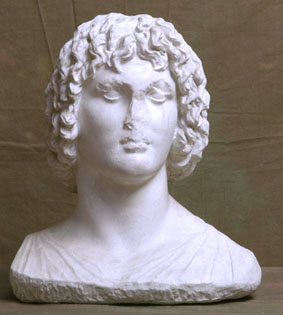
Eubouleus was a minor deity of the underworld, popular in Eleusis. From literary sources Praxiteles is known to have made a sculpture of Eubouleus. For many years this piece was believed to be the original. It is now thought more likely to be a Roman copy from the second century BCE, as it shows little difference from a number of other Roman copies, and the inscription found with it, identifying the head as Eubouleus, is Roman
Athens, National Museum 181
Lippold: Griechische Plastik, 241(n.2), pl. 90.1
Papaspiridi: Guide du Musée Nationale d’Athènes (1927), 50
Richter: Sculpture & Sculptors of the Greeks (1950), fig.512
Richter: Sculpture & Sculptors of the Greeks (1950), fig.511 (for Roman copy at Athens, NM 1839)
Lawrence: Later Greek Sculpture (1927), 97, appendix
Found at Eleusis
